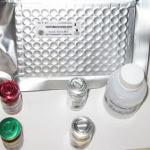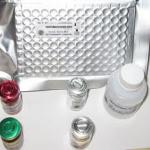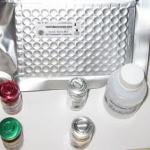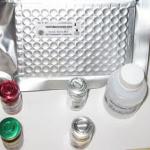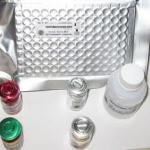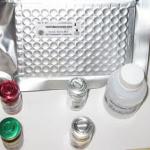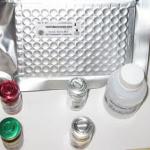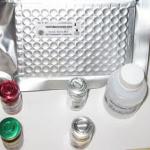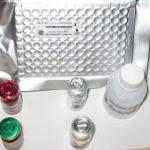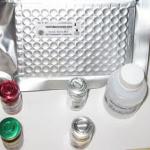-
Specification:100ul/200ul/1ml Description:
AMP-activated protein kinase (AMPK) is highly conserved from yeast to plants and animals and plays a key role in the regulation of energy homeostasis . AMPK is a heterotrimeric complex composed of a catalytic α subunit and regulatory β and γ subunits, each of which is encoded by two or three distinct…
-
Description:
Aggrecan, large aggregating proteoglycan or chondroitin sulfate proteoglycan 1 is a proteoglycan, or a protein modified with carbohydrates; the human form of the protein is 2316 amino acids long and can be expressed in multiple isoforms due to alternative splicing.Along with Type-II collagen, aggrecan forms a major structural…
-
Specification:100ul/200ul/1ml Description:
Amyloid beta (Aβ or Abeta) is a peptide of 39–43 amino acids that appears to be the main constituent of amyloid plaques in the brains of Alzheimer's disease patients. Similar plaques appear in some variants of Lewy body dementia and in inclusion body myositis, a muscle disease. Aβ also forms aggregates…
-
Specification:100ul/200ul/1ml Description:
Angiotensin II is degraded to angiotensin III by angiotensinases that are located in red blood cells and the vascular beds of most tissues. It has a half-life in circulation of around 30 seconds, whereas, in tissue, it may be as long as 15–30 minutes.
Angiotensin I is converted to angiotensin II through…
-
Description:
BRCA2 (Breast Cancer Type 2 susceptibility protein) is a protein that in humans is encoded by the BRCA2 gene. BRCA2 orthologs have been identified in most mammals for which complete genome data are available. BRCA2 belongs to the tumor suppressor gene family and the protein encoded by this gene is involved in the repair of chromosomal…
-
Specification:100ul/200ul/1ml Description:
Protein kinases are enzymes that transfer a phosphate group from a phosphate donor, generally the g phosphate of ATP, onto an acceptor amino acid in a substrate protein. By this basic mechanism, protein kinases mediate most of the signal transduction in eukaryotic cells, regulating cellular metabolism,…
-
Specification:100ul/200ul/1ml Description:
The adrenergic beta1 receptor (beta1-adrenoceptor) is a member of the adrenergic receptor group of G-protein-coupled receptors that also includes alpha1A, alpha1B, alpha1D, alpha2A, alpha2B, alpha2C, beta2 and beta3. They are located primarily in the CNS, heart, coronary artery, kidney and muscle and are…
-
Description:
Angiopoietin-related protein 1 is a protein that in humans is encoded by the ANGPTL1 gene.
Angiopoietins are members of the vascular endothelial growth factor family and the only known growth factors largely specific for vascular endothelium. Angiopoietin-1, angiopoietin-2, and angiopoietin-4 participate in the formation of blood…










